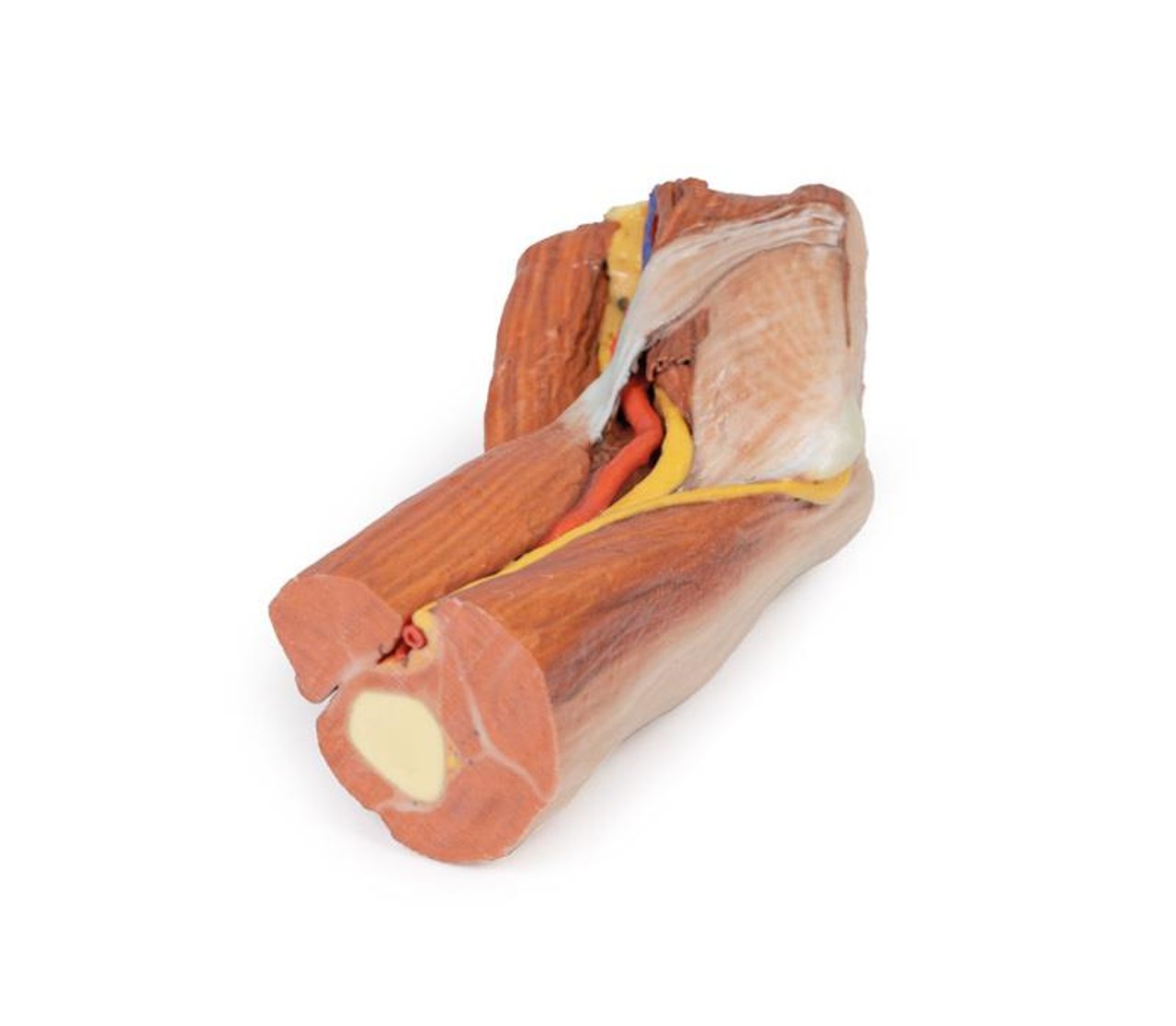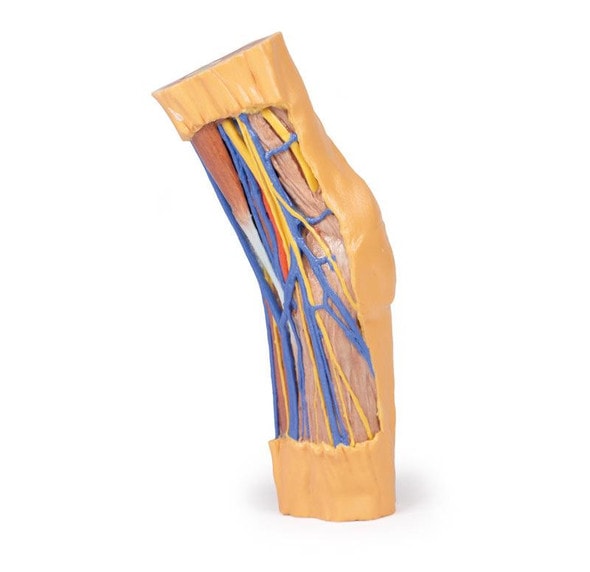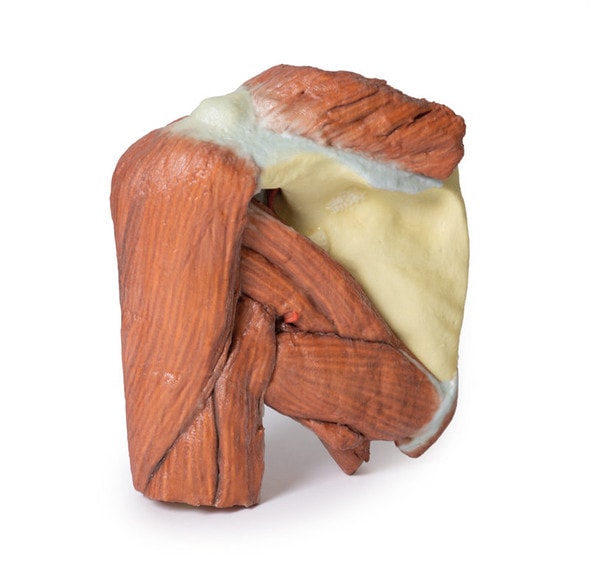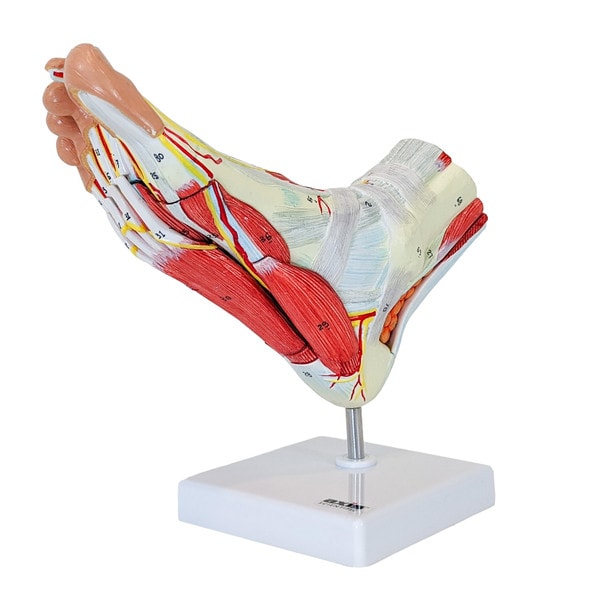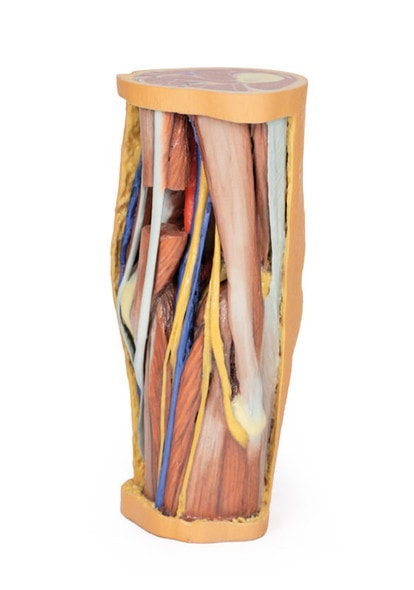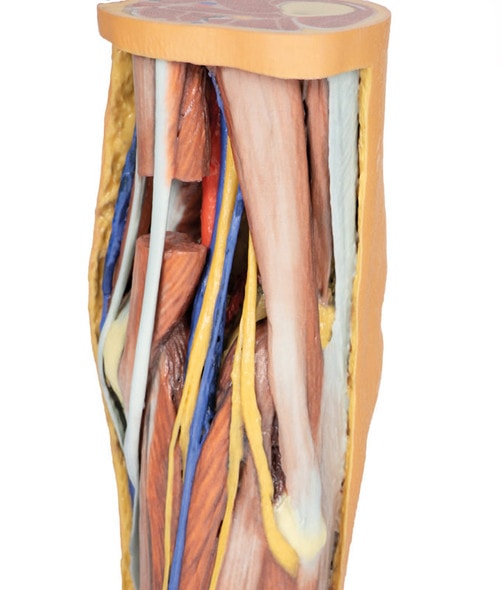- Home
- Anatomy Models
- Extremity & Joint Anatomy Models
- 3D Printed Cubital Fossa - Muscles, Large Nerves and the Brachial Artery
Description
At the forefront of medicine and technology, we are proud to offer these incredible, uncompromised replicas of human anatomy. Using the latest 3D printing technology and materials available, this model is an exact replica of a human cadaver, brought to "life" by extensive medical scanning and manufacturing technologies. Over are the days of using ethically questionable cadavers, the mess of hazardous preservation chemicals, and the inaccuracies of plastinated models that often over-enhance anatomy for display, not realism. See the future, and the beauty, of real human anatomy with these incredible anatomical replicas!
This 3D printed specimen presents a left distal arm and proximal forearm with all skin, subcutaneous fat and superficial cutaneous nerves and veins removed. The elbow region partially flexed to display the arrangement of muscles and neurovascular structures of the cubital fossa.
Viewed from the anterior aspect the most obvious feature is the biceps brachii muscle, with its insertion in the form of the flattened bicipital aponeurosis passing medially over the muscles of the common flexor origin and the more rounded tendon passing deep to insert into the radial tuberosity. The brachialis muscle lies deep to biceps brachii and is visible from the lateral aspect. In the proximal part of the forearm the brachioradialis muscle (slightly elevated and reflected laterally to reveal deeper structures) and extensor carpi radialis longus are identifiable. On the medial side one can see the classic arrangement of the biceps brachii tendon, brachial artery and median nerve (TAN) from lateral to medial. They are partially covered by the bicipital aponeurosis as they course distally. The ulnar nerve can be seen changing position from the anterior compartment of the arm to the posterior compartment (the intermuscular septum has not been preserved but triceps muscle is clearly evident) to pass behind the medial epicondyle and enter the cubital tunnel. It travels distally between the two heads of flexor carpi ulnaris. Close inspection of the groove between brachialis and brachioradialis reveals the radial nerve (which would not be visible if the brachioradialis muscle had not been partly reflected). It lies amongst some fat (yellow) but its superficial branch passes distally below brachioradialis.
In the posterior view the triceps tendon inserts into the olecranon process of the ulna. The medial and lateral epicondyles are also clearly visible (grey/white in colouration). The medial epicondyle is clearly identifiable as it has the ulnar nerve passing posteriorly before penetrating the deep fascia covering the gap between the two heads of flexor carpi ulnaris.
The proximal section through the arm reveals the biceps muscle lying anteriorly with the neurovascular bundle on its medial side which contains the brachial artery together with median nerve and ulnar nerve (veins have been removed). The three heads of triceps (lateral, long and the deeper placed medial head) are clearly visible in the posterior compartment. On the distal section through the forearm it is more difficult to discern each muscle, but the cut surfaces of the radius and ulna are clearly visible - as is the brachial artery lying medial to pronator teres muscle and the median nerve lying just deep to this muscle (which is the most lateral of the muscles arising from the common flexor origin).
Please Note: Thanks to the flexibility of manufacturing that 3D Printing offers, this model is "printed to order", and is not typically available for immediate shipment. Most models are printed within 15 working days and arrive within 3-5 weeks of ordering, and once an order is submitted to us, it cannot be canceled or altered. Please contact us if you have specific a specific delivery date requirement, and we will do our best to deliver the model by your target date.
Advantages of 3D Printed Anatomical Models
- 3D printed anatomical models are the most anatomically accurate examples of human anatomy because they are based on real human specimens.
- Avoid the ethical complications and complex handling, storage, and documentation requirements with 3D printed models when compared to human cadaveric specimens.
- 3D printed anatomy models are far less expensive than real human cadaveric specimens.
- Reproducibility and consistency allow for standardization of education and faster availability of models when you need them.
- Customization options are available for specific applications or educational needs. Enlargement, highlighting of specific anatomical structures, cutaway views, and more are just some of the customizations available.
Disadvantages of Human Cadavers
- Access to cadavers can be problematic and ethical complications are hard to avoid. Many countries cannot access cadavers for cultural and religious reasons.
- Human cadavers are costly to procure and require expensive storage facilities and dedicated staff to maintain them. Maintenance of the facility alone is costly.
- The cost to develop a cadaver lab or plastination technique is extremely high. Those funds could purchase hundreds of easy to handle, realistic 3D printed anatomical replicas.
- Wet specimens cannot be used in uncertified labs. Certification is expensive and time-consuming.
- Exposure to preservation fluids and chemicals is known to cause long-term health problems for lab workers and students. 3D printed anatomical replicas are safe to handle without any special equipment.
- Lack of reuse and reproducibility. If a dissection mistake is made, a new specimen has to be used and students have to start all over again.
Disadvantages of Plastinated Specimens
- Like real human cadaveric specimens, plastinated models are extremely expensive.
- Plastinated specimens still require real human samples and pose the same ethical issues as real human cadavers.
- The plastination process is extensive and takes months or longer to complete. 3D printed human anatomical models are available in a fraction of the time.
- Plastinated models, like human cadavers, are one of a kind and can only showcase one presentation of human anatomy.
Advanced 3D Printing Techniques for Superior Results
- Vibrant color offering with 10 million colors
- UV-curable inkjet printing
- High quality 3D printing that can create products that are delicate, extremely precise, and incredibly realistic
- To improve durability of fragile, thin, and delicate arteries, veins or vessels, a clear support material is printed in key areas. This makes the models robust so they can be handled by students easily.






